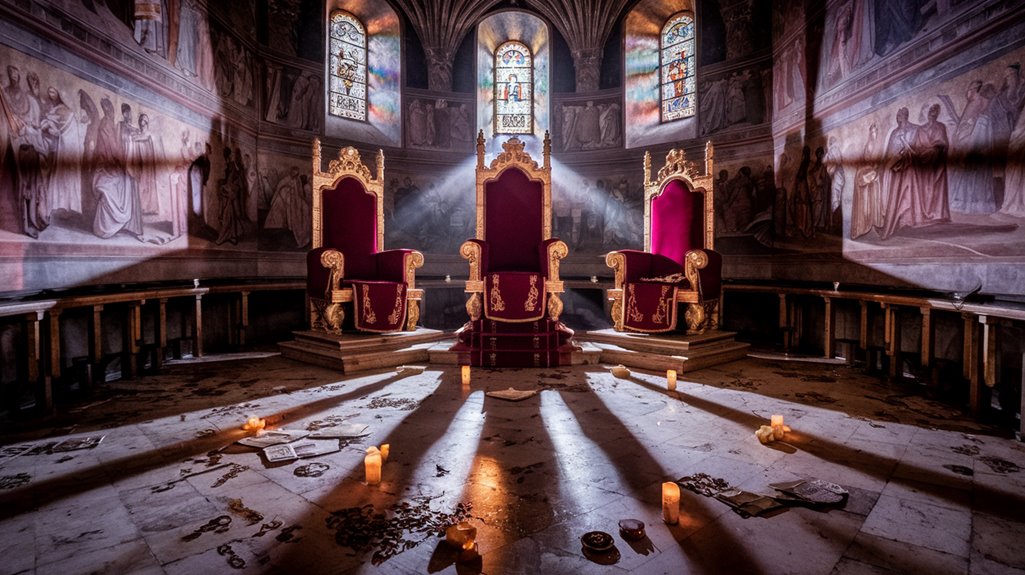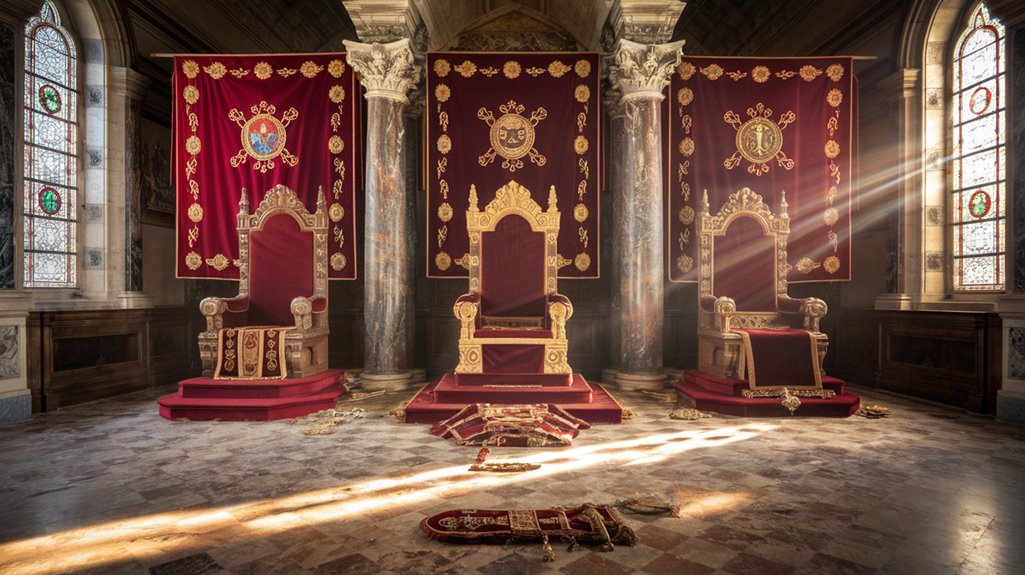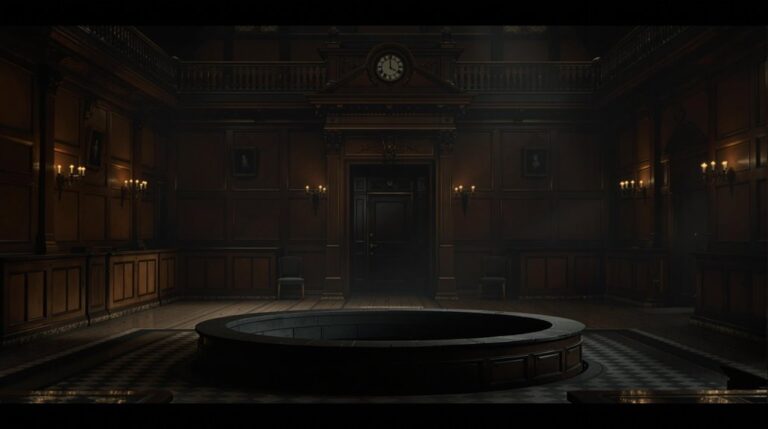The Great Papal Schism: The Day the Papacy Split in Three
You've heard of power struggles, political feuds, and leadership crises, but you haven't encountered anything quite like the Great Papal Schism of 1378. When three different men claimed to be God's representative on Earth, the Catholic Church found itself torn between competing visions of divine authority. It's a tale that'll challenge your assumptions about medieval power dynamics and show you how a single contested election sparked one of Christianity's most dramatic turning points.
The Origins of the Papal Crisis
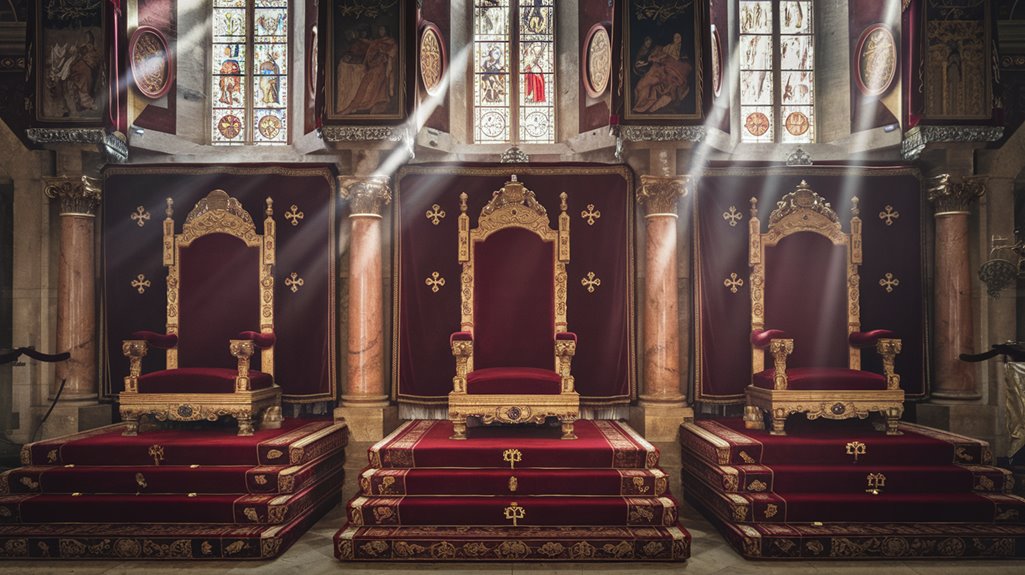
When Pope Gregory XI died in 1378, the Catholic Church plunged into one of its most tumultuous periods. You might think the election of Urban VI would've brought stability, but it instead sparked a crisis of papal legitimacy that would last for decades.
A group of French cardinals, claiming they'd been pressured by Roman mobs, rejected Urban VI's election and chose Clement VII as a rival pope. The situation was especially complex since the papacy had just returned after seventy years abroad in Avignon. Much like the power struggle between Leo IX and Cerularius centuries earlier, this conflict centered on papal authority.
What began as a disputed election quickly transformed into a web of political intrigue, as European powers took sides in the conflict.
You'll find that France threw its support behind Clement VII in Avignon, while England and Italy stood firmly with Urban VI in Rome.
The division wasn't just religious – it reflected the deep political rivalries that dominated medieval Europe, particularly the ongoing Hundred Years' War.
From Avignon to Rome: A Church Divided
To understand how the Church found itself with multiple popes, you'll need to look back at the Avignon Papacy that preceded the schism. For nearly 70 years, seven successive popes ruled from France instead of Rome, creating deep divisions within the Church.
The French crown's Avignon influence grew increasingly controversial, leading Pope Gregory XI to finally return to Rome in 1377. During this period, the popes developed a system of centralized church administration. Urban VI's election in 1378 initially brought hope, but his violent temperament quickly alienated the cardinals.
His death sparked a crisis that would split the Church into rival factions. The schism aftermath brought unprecedented challenges:
- Two competing papal courts emerged – one in Rome and one in Avignon
- A third claimant arose when the Council of Pisa failed to resolve the conflict
- The Church's authority fractured as European kingdoms chose different sides
This division would persist until the Council of Constance finally reunited the Church under a single pope in 1417.
The Rise of Multiple Papal Claims
After Gregory XI's death in 1378, the Catholic Church plunged into unprecedented chaos as rival factions elected multiple popes to lead the faithful.
You'd have witnessed French cardinals, dissatisfied with Urban VI's election, choosing Clement VII as a rival pope, sparking intense theological disputes about papal legitimacy.
The situation grew even more complex in 1409 when the Council of Pisa attempted to resolve the crisis.
Instead of fixing the problem, they elected Alexander V as a third pope, while the existing popes, Gregory XII and Benedict XIII, refused to step down.
Now you'd three men claiming to be the true leader of the Catholic Church, each supported by different regions and political allies.
The council's decision to declare the other popes heretical only deepened the divide.
This crisis became known as the Western Schism, creating deep divisions in loyalty among European kingdoms.
England and allies firmly supported Urban VI's claim to the papacy, while France backed his rival.
National Politics and Religious Power
During the Great Schism, national politics and religious power became inseparable as European monarchs seized the opportunity to expand their influence. Different kingdoms supported rival pope candidates based on political allegiances during this period.
As religious tensions mounted, rulers strategically formed political alliances to strengthen their positions and leverage religious influence for territorial gains. Mutual excommunications between religious leaders fueled these political divisions even further.
The impact of this power struggle manifested in three key ways:
- Monarchs exploited church divisions to increase their secular authority, often playing competing papal claims against each other.
- Nations aligned themselves with different religious factions, reshaping Europe's political landscape.
- The rise of national churches weakened central church authority while strengthening state power.
You'll find that this period fundamentally transformed the relationship between church and state, creating distinct political cultures in Eastern and Western Europe that would shape centuries of future conflicts and governance styles.
The Council of Constance's Historic Resolution
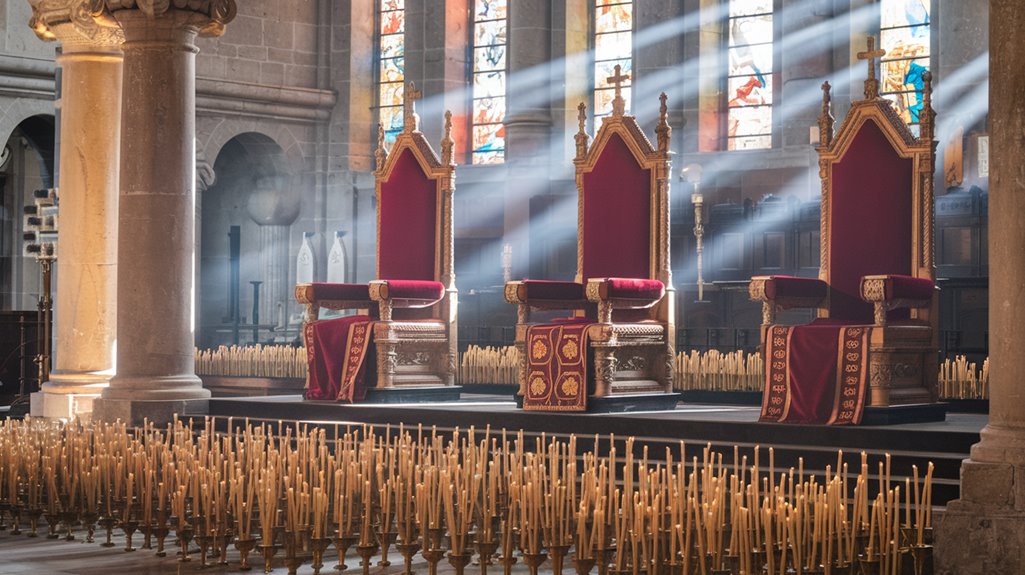
When religious tensions reached their peak in the early 15th century, the Council of Constance emerged as a pivotal turning point in Catholic history. From 1414 to 1418, you'd have witnessed remarkable council proceedings that systematically addressed the chaos of having three competing popes. The situation had become especially complex after the Pisan line added a third papal claim to the existing rivalry.
Under King Sigismund's support, the council successfully deposed or secured resignations from the papal claimants. The gathering saw impressive attendance with 29 cardinals present, along with thousands of ecclesiastics and visitors from across Europe.
The council's most significant achievement was the election of Martin V in 1417, finally reuniting the Catholic Church under a single pope.
You'll find it fascinating that while resolving the schism, the council also challenged papal authority through decrees like Haec sancta and Frequens. These measures attempted to establish councils' superiority over popes and mandated regular council meetings, though their lasting impact proved limited.
Legacy and Lessons of the Great Schism
The centuries-old Great Schism between the Eastern Orthodox and Western Catholic Churches left an indelible mark on Christian history that resonates today.
The painful lessons from this division have shaped modern approaches to ecclesiastical unity and theological reconciliation.
You'll find three enduring impacts from this historic split:
 Councils of Lyon and subsequent meetings demonstrate the deep complexities of healing religious divisions.
Councils of Lyon and subsequent meetings demonstrate the deep complexities of healing religious divisions.
While modern ecumenical efforts have led to some reconciliation, including the mutual lifting of excommunications, substantial unity between the churches remains elusive.

